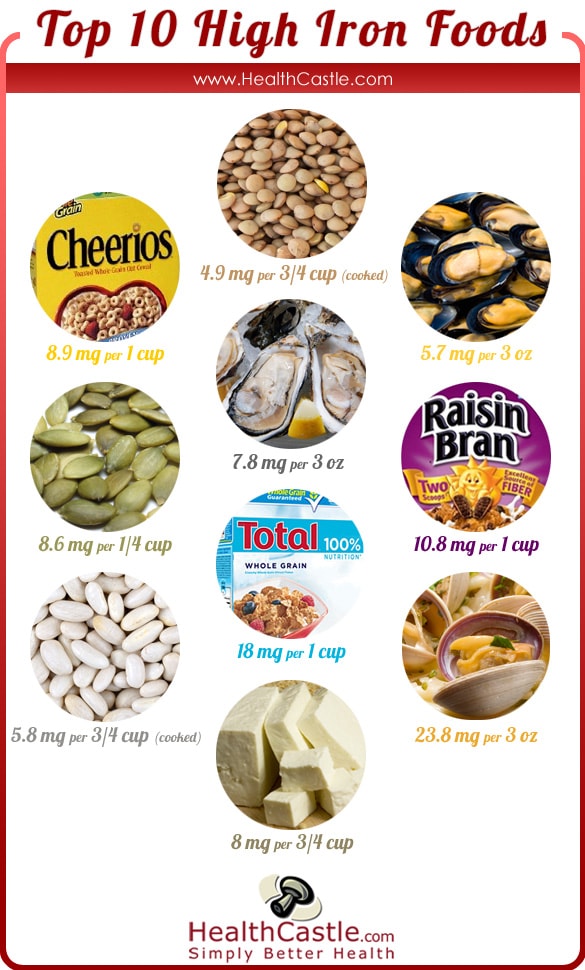Is it possible to optimize your diet and effortlessly boost your energy levels? The answer lies in strategically incorporating iron-rich foods, a cornerstone of a vibrant and healthy life.
Iron, an essential mineral, is a pivotal player in a myriad of bodily functions. It’s not just about preventing anemia; it’s about fueling your body's engine. Iron's primary role is in the production of hemoglobin, the protein within red blood cells responsible for carrying oxygen from your lungs to every cell in your body. Adequate iron levels ensure that your cells receive the oxygen they need to function optimally, promoting energy, focus, and overall vitality. Beyond oxygen transport, iron is also involved in energy production, immune function, and DNA synthesis. A deficiency can manifest in various ways, from fatigue and weakness to impaired cognitive function and weakened immunity. The good news is that it's relatively easy to incorporate iron-rich foods into your daily diet. The key is to be informed and make conscious choices. Consider the nutritional value of the foods you choose. Understanding the different types of iron and how your body absorbs them is also vital.
Let's delve into the world of iron-rich foods, separating fact from fiction and providing practical guidance on incorporating them into your daily routine. The information below will provide a comprehensive overview of the essential nutrient iron, its benefits, and the food sources that can help you meet your daily requirements. Understanding the nuances of iron absorption and the factors that enhance or inhibit it will empower you to make informed dietary choices.
| Category | Details |
|---|---|
| What is Iron? | An essential mineral crucial for oxygen transport, energy production, and overall health. |
| Why is Iron Important? |
|
| Types of Iron |
|
| Daily Iron Requirements |
|
| Factors Affecting Iron Absorption |
|
| Symptoms of Iron Deficiency | Fatigue, weakness, pale skin, shortness of breath, headaches, dizziness, and brittle nails. |
| Sources of Iron |
|
| Foods High in Iron (Examples) |
|
| Tips for Boosting Iron Intake |
|
| Risks of Iron Deficiency | Anemia, fatigue, impaired immune function, cognitive difficulties. |
| Risks of Iron Excess |
|
| Iron Supplements | Consult with a healthcare provider before taking iron supplements to determine dosage and potential side effects. |
| Consultation | Always consult with a healthcare professional or a registered dietitian for personalized advice, especially if you suspect an iron deficiency or have any underlying health conditions. |
Seafood, for example, can be an excellent alternative to red meat. Consider oysters, which are particularly rich in iron. According to the USDA, four large oysters can provide 7.8 mg of iron. Learning about the benefits, sources, and risks of iron is key. Understanding how much iron you need, which foods are rich in iron, and how to avoid deficiency or excess, are all important parts of a balanced diet. Keep in mind both heme and non-heme iron: soybeans offer a substantial amount of iron (49% of the Daily Value per cup), but your body better absorbs iron from meat.
Knowing the benefits of iron and the sources of it will help you make informed choices. Iron carries oxygen in your blood. Heme and non-heme iron sources, along with Vitamin C to boost absorption, are all part of an effective plan. The Cleveland Clinic Health Essentials offers guidance on the types, benefits and sources of iron, and how much you need daily. Also, understanding how to pair the foods with Vitamin C for better absorption is helpful.
To further illustrate the significance of iron, let's explore some top food sources. Understanding the iron content of various foods, such as fortified cereals, beef, shellfish, dried fruits, beans, and spinach, can help you plan your meals effectively. Here's a look at the best iron-rich foods to incorporate into your diet, along with some suggestions on how to include them in your meal plan.
It's also crucial to recognize that the body absorbs iron differently depending on the source. Heme iron, found in animal products like red meat, poultry, and seafood, is absorbed more readily than non-heme iron, which is found in plant-based foods. Pairing non-heme iron sources with vitamin C-rich foods can significantly enhance absorption. For example, having a spinach salad with bell peppers and a citrus dressing will maximize the iron your body receives.
In addition to dietary sources, consider cooking with cast-iron cookware. The iron from the cookware can leach into your food, increasing its iron content. Moreover, be mindful of factors that can inhibit iron absorption. Avoid consuming tea, coffee, or calcium-rich foods with your iron-rich meals, as these can interfere with the process.
Finding the right balance of foods is key. A diet that is rich in iron supports overall health. By making informed food choices, you can provide your body with the fuel it needs to thrive. Iron-rich foods can be delicious and beneficial for your health.



